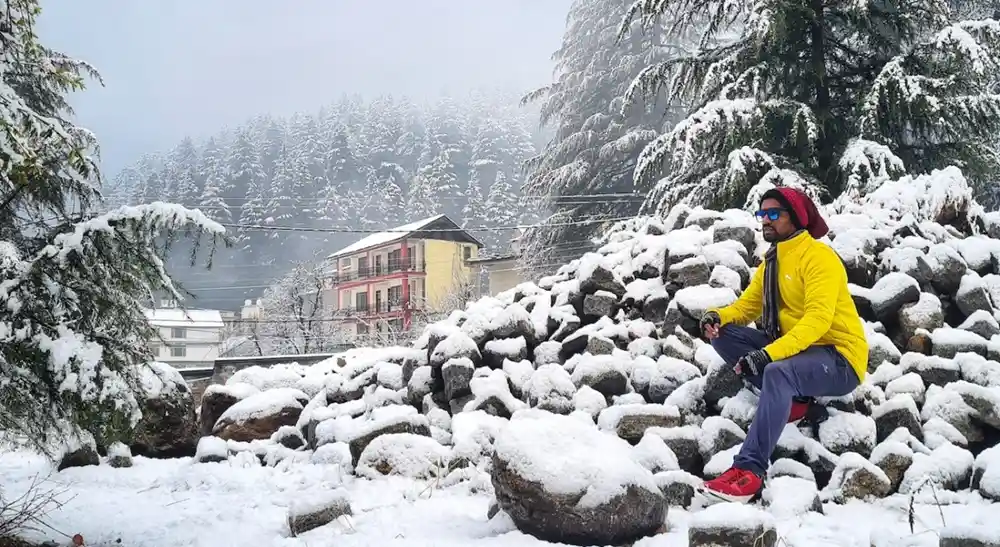The Ultimate Guide To The History, Origin And Latest Developments In Sarees

Sarees are a top choice for festive and wedding looks for women, with the latest sarees available in a plethora of designs and styles. However, the now bespoke masterpieces were once just a humble woven fabric. The latest sarees (5 to 9 yards) that we love and know today have been through a long journey in time to evolve into their modern embellished counterparts.
The use of unstitched fabrics by both women and men can be traced back to the Indus Valley Civilization (2200 to 1800 BCE) in the northwestern regions of South Asia. Want to know more? This deep dive into the origin of sarees will help you gain a deeper understanding of the garment, how it is an important part of history and all the latest trends.
Historical Origins
The origins of sarees begin with the production of woven cotton fabrics. In India, cotton was first believed to be cultivated in 3000 BCE, which was followed by weaving cotton fibres and adding colour by using naturally occurring dyes like indigo, turmeric and lac. It is suggested that the word ‘saree’ is derived from the word ‘sattika,’ which was used in reference to a three-piece ensemble in Jain and Buddhist scripts. It is also mentioned in Sanskrit and Buddhist Pali literature from the 6th Century BC.
Evolution
While the early unstitched fabric was worn around the waist, the influence of the Aryans, Greeks, Persians, and Mughals, introduced new draping styles that were embraced by Indian women. During this evolution, Indian artisans also developed the art of encrusting fabrics with precious gemstones, and pearls. The kanchuki, which is mentioned in many epics, was a piece of clothing women wore across their breasts, and is believed to be the first reference to blouses. The mention of cholis in many of these epics leads to the belief that draped garments played a big role in the development of modern lehengas.
Handlooms
A handloom is used to weave fabrics without the use of electricity and also dates back to the Indus Valley Civilization. With the dawn of British rule and industrialization, machine-made fabrics were being used widely. However, handlooms regained popularity during the struggle for Independence. The image of Mahatma Gandhi using the spinning wheel became a symbol of national identity and a way to support rural communities. The traditional craft is practised even today, with the art being taught for generations.
Traditional Embroidery and Printing
Traditional techniques of embroidery and printing developed along with weaving and handlooms. Embroidery refers to the art of using thread, beads and pearls to create intricate designs on fabrics. It has been mentioned in the Vedas, dating back to the 5th Century BC. Hand-painted textiles such as Kalamkari, tie-dyeing like Bandhani, and woodblock printing all began taking shape in different Indian regions. These techniques are unique to each Indian state and the sarees produced using different fabrics showcase the beauty of a diverse country.
Modernisation
The post-independence era brought the advent of industrial development in India and many factories propped up to scale up the production and distribution of sarees. Fabrics like chiffon, organza, and nets were introduced to add a modern touch to otherwise traditional sarees made of cotton, jacquard, brocade, and linen. From local shops to high-end designer wear – you can find the garment in all budgets today.
The styling of the latest sarees has also evolved to reflect Western styles and to incorporate modern designs.
Here are the top trends to watch out for:
- Pre-draped is the buzzword to look out for in the world of sarees. Pre-stitched sarees are ready-to-wear and include a skirt with even pleats that can be simply hooked. The latest sarees take away the long process of draping a saree and most don’t require any additional underskirts, bringing the ease required for our fast-paced world.
- All sarees are accompanied by a matching unstitched blouse. However, the ‘who’s got the time’ mindset seems to have taken over the styling of the latest sarees, with blouses being replaced with crop tops, bralettes, and even blazers.
- The younger generation is also opting for interesting silhouettes by draping sarees around fitted trousers, palazzos, and dhoti-style pants.
- Ruffled sarees that resemble the silhouette of a Western gown are also popular for their whimsical look. They are ideal for cocktail parties, and evening events, especially when paired with heels and statement jewellery.
- Organza and sequin work are all the rage during the wedding and festive season. The shiny latest sarees don’t seem to be going away anytime soon and will be trendy in 2024 as well. It is best to let the sarees shine with these fabrics and keep the makeup and jewellery minimal.
- Prints like polka dots, psychedelic prints, and floral motifs are also back with the retro revival. People are opting for vibrant colours, including neon shades, to nail the 80s vibe. Pair the latest sarees with chunky wedges and adorn your hair bun with flowers to take your outfit to the next level.
- Ombre sarees made their way into closets this year with Alia Bhatt’s looks in RARKPK (2023). Chiffon sarees, especially in pink and blue, continue to be in high demand as women look to recreate the iconic outfits.
- Many women are pairing their latest sarees with cape blouses, which are available in various lengths – from ending at the midriff and elaborate floor-length designs to traditional blouses with cape sleeves. You can also combine trends and opt for ruffled cape blouses.
- The mermaid style of saree draping is preferred for the sensuous shape it adds to your look. It is fitted at the top and flares at the bottom. Also known as the fish cut drape, it is a popular draping style for parties.
- Traditional weaves like Banarsi Uppada and Tamil Nadu’s Kanjivaram are still the top choices for bridal trousseaux. However, the latest sarees with traditional designs are being sought in pastel shades, as well as lighter silk fabrics to get the royal feel without the bulk.






